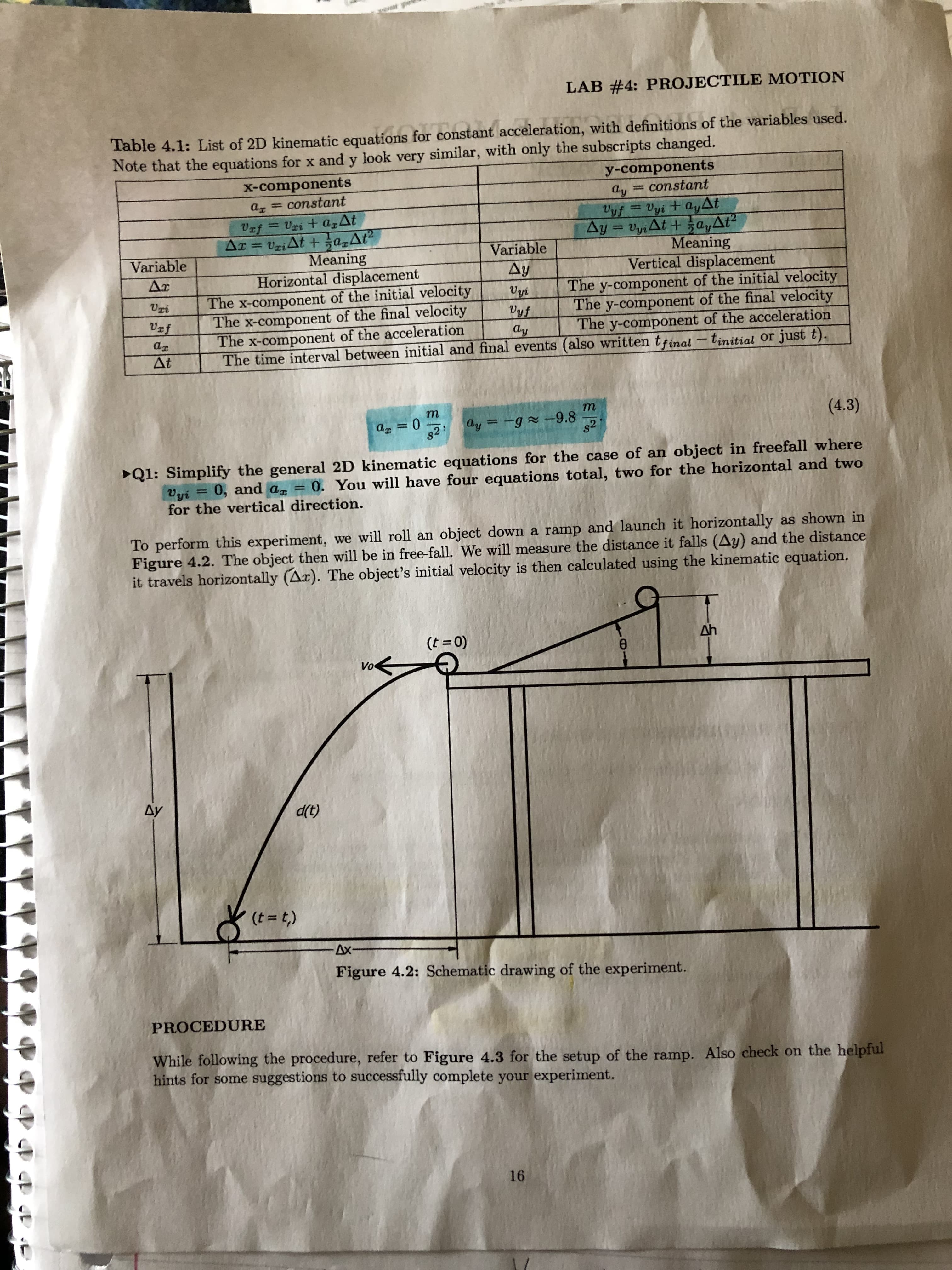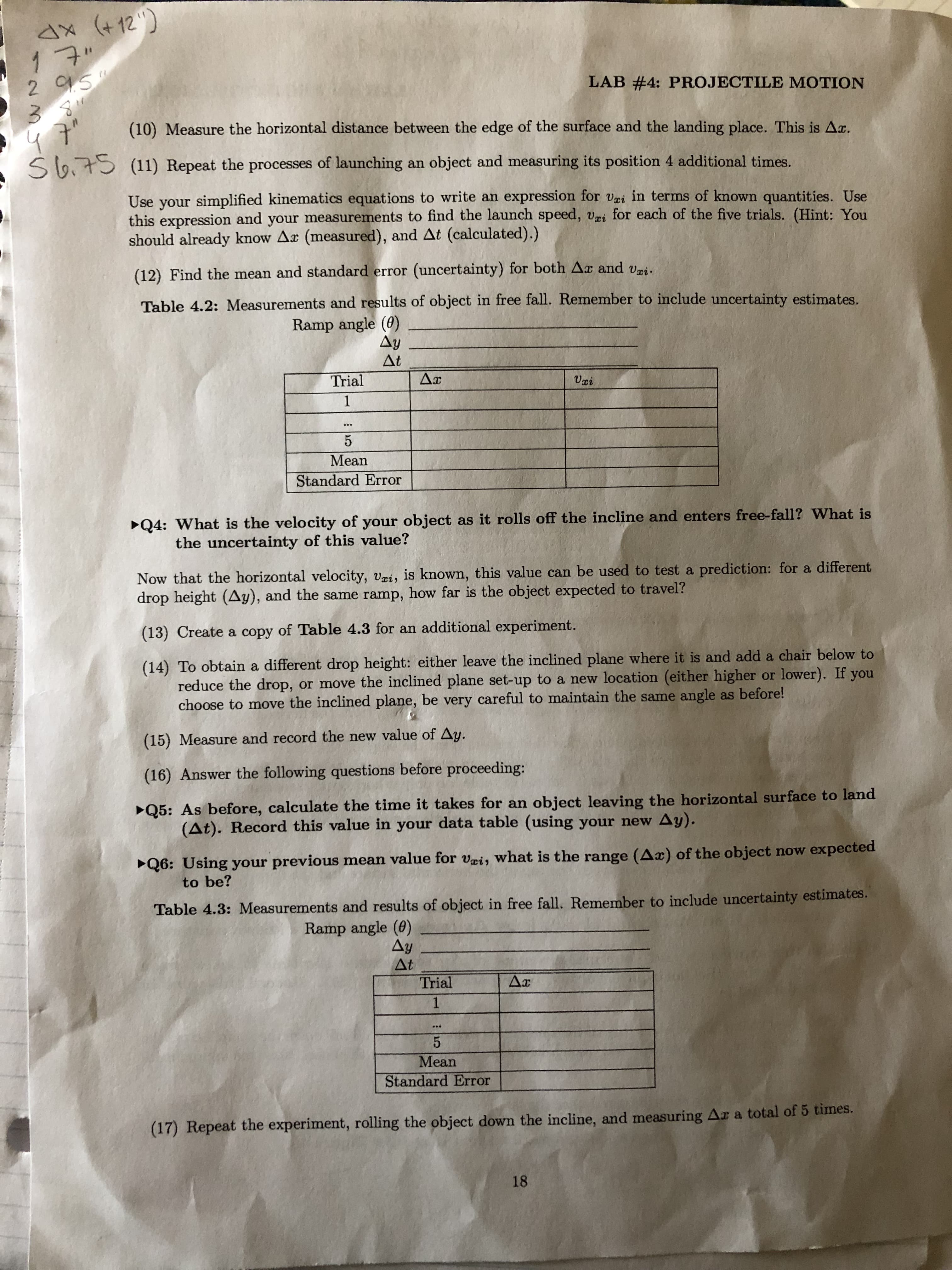I need help with Q4. I can't figure out what equation I should use to find the velocity. I think it would be a combination of the velocity formulas for x and y but I'm not sure. My 4 simplified equations are: 1. Vxf = Vxi 2. (delta)x = Vxi * (delta)t 3. Vyf = 9.8 m/s^2 * (delta)t 4. (delta)y = 1/2(9.8 m/s^2) * (delta)t^2 For my data I have: (delta)y = 0.6604 meters (delta) t = 0.367 seconds I don't need the answer or a long explanation, I really just can't figure out what equation/formula I need to use to find "the velocity of your object as it rolls off the incline and enters free-fall."
Displacement, Velocity and Acceleration
In classical mechanics, kinematics deals with the motion of a particle. It deals only with the position, velocity, acceleration, and displacement of a particle. It has no concern about the source of motion.
Linear Displacement
The term "displacement" refers to when something shifts away from its original "location," and "linear" refers to a straight line. As a result, “Linear Displacement” can be described as the movement of an object in a straight line along a single axis, for example, from side to side or up and down. Non-contact sensors such as LVDTs and other linear location sensors can calculate linear displacement. Non-contact sensors such as LVDTs and other linear location sensors can calculate linear displacement. Linear displacement is usually measured in millimeters or inches and may be positive or negative.
I need help with Q4. I can't figure out what equation I should use to find the velocity. I think it would be a combination of the velocity formulas for x and y but I'm not sure. My 4 simplified equations are:
1. Vxf = Vxi
2. (delta)x = Vxi * (delta)t
3. Vyf = 9.8 m/s^2 * (delta)t
4. (delta)y = 1/2(9.8 m/s^2) * (delta)t^2
For my data I have:
(delta)y = 0.6604 meters
(delta) t = 0.367 seconds
I don't need the answer or a long explanation, I really just can't figure out what equation/formula I need to use to find "the velocity of your object as it rolls off the incline and enters free-fall."


Trending now
This is a popular solution!
Step by step
Solved in 3 steps with 1 images


